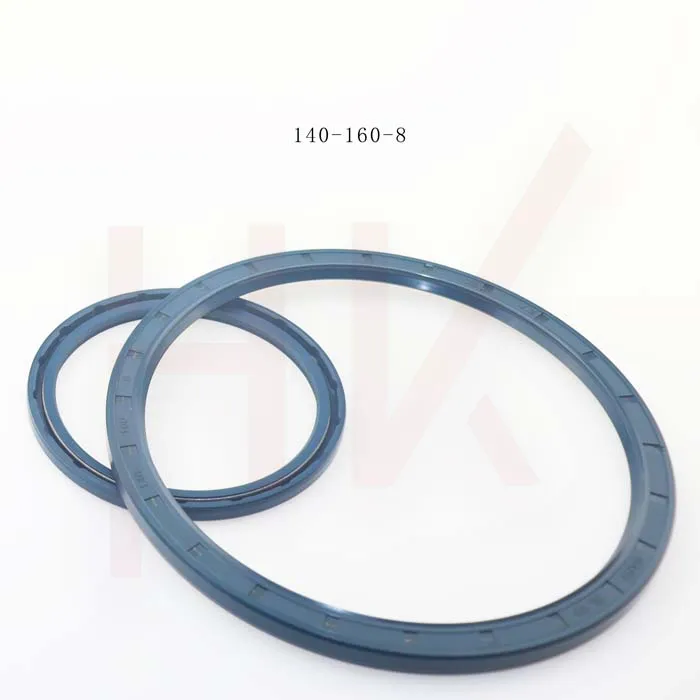ธ.ค. . 06, 2024 16:02 Back to list
Hydraulic Wiper Seal Applications and Benefits in Industrial Machinery Systems
Understanding Hydraulic Wiper Seals Importance and Functionality
Hydraulic systems are crucial for various industrial applications, ranging from heavy machinery to automotive production. One of the key components that ensure the efficiency and longevity of these systems is the hydraulic wiper seal. Often overlooked, these seals play a critical role in maintaining the integrity of hydraulic systems by preventing contaminants from entering the hydraulic cylinders.
What are Hydraulic Wiper Seals?
Hydraulic wiper seals, sometimes referred to simply as wipers or scrapers, are specially designed seals that are engineered to prevent dirt, dust, and moisture from entering the hydraulic cylinder when the piston retracts. Positioned at the rod end of the hydraulic cylinder, they act as a barrier that protects the internal components from external contamination, which is vital for the optimal performance and durability of the hydraulic system.
The Importance of Wiper Seals
The significance of hydraulic wiper seals cannot be overstated
. Contaminants entering a hydraulic system can lead to several negative outcomes, including1. Wear and Tear Dirt and debris can cause abrasion on internal surfaces, leading to premature wear of seals and other components. 2. System Failure Contamination can disrupt the hydraulic fluid's properties, leading to breakdowns in the system and potentially catastrophic failure.
3. Increased Maintenance Costs As the system endures more wear and tear due to contaminants, maintenance costs rise significantly as parts need replacing more frequently.
4. Decreased Efficiency Contaminated systems can lead to reduced efficiency, impacting productivity and performance.
How Do Wiper Seals Work?
hydraulic wiper seal

Wiper seals function through a unique design that allows them to efficiently remove debris while maintaining a tight seal. When the piston of a hydraulic cylinder retracts, the wiper moves along the rod, effectively scraping off any contaminants that may have accumulated on the rod's surface. This action is vital during the retraction cycle of the cylinder, as it ensures that any dirt or particles are expelled from the rod before they can penetrate into the cylinder.
Materials Used in Wiper Seals
Wiper seals are made from various materials that can withstand harsh environments and varying temperatures. Common materials include
- Nitrile Rubber Known for its excellent resistance to petroleum-based fluids and its durability. - Polyurethane Recognized for its high abrasion resistance and tear strength, making it suitable for more demanding applications.
- Fluorocarbon Often used in extreme temperature applications due to its superior chemical resistance.
The choice of material is critical as it influences the seal’s performance, especially in environments exposed to harsh chemicals or extreme temperatures.
Installation and Maintenance
Proper installation of hydraulic wiper seals is essential for their effectiveness. They must fit snugly within the grooves and be installed in the correct orientation. Regular maintenance checks are also recommended to ensure that the seals remain in good condition. Signs of wear, such as cracks or noticeable deformities, should be addressed immediately to prevent larger issues.
Conclusion
In conclusion, hydraulic wiper seals, though small components, are vital to the overall efficiency and longevity of hydraulic systems. By preventing contamination and protecting sensitive components, these seals contribute significantly to the performance of machinery used in various industries. Investing in high-quality wiper seals and ensuring they are properly installed and maintained can ultimately save companies money and reduce downtime, thereby enhancing productivity. As technology advances, we can expect further innovations in seal design and materials, setting the stage for even more reliable hydraulic systems in the future.
-
TCN Oil Seal Metal Ring Reinforcement for Heavy Machinery
NewsJul.25,2025
-
Rotary Lip Seal Spring-Loaded Design for High-Speed Applications
NewsJul.25,2025
-
Hydraulic Cylinder Seals Polyurethane Material for High-Impact Jobs
NewsJul.25,2025
-
High Pressure Oil Seal Polyurethane Coating Wear Resistance
NewsJul.25,2025
-
Dust Proof Seal Double Lip Design for Construction Equipment
NewsJul.25,2025
-
Hub Seal Polyurethane Wear Resistance in Agricultural Vehicles
NewsJul.25,2025
-
The Trans-formative Journey of Wheel Hub Oil Seals
NewsJun.06,2025
Products categories
















